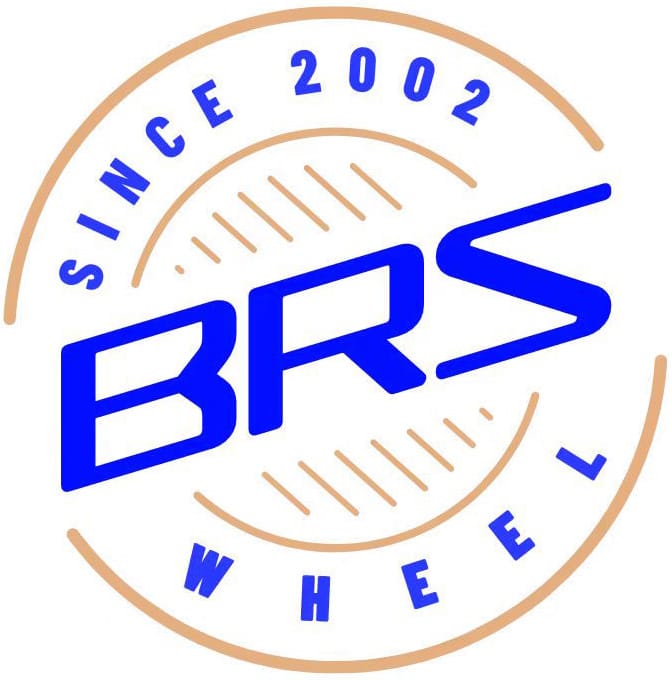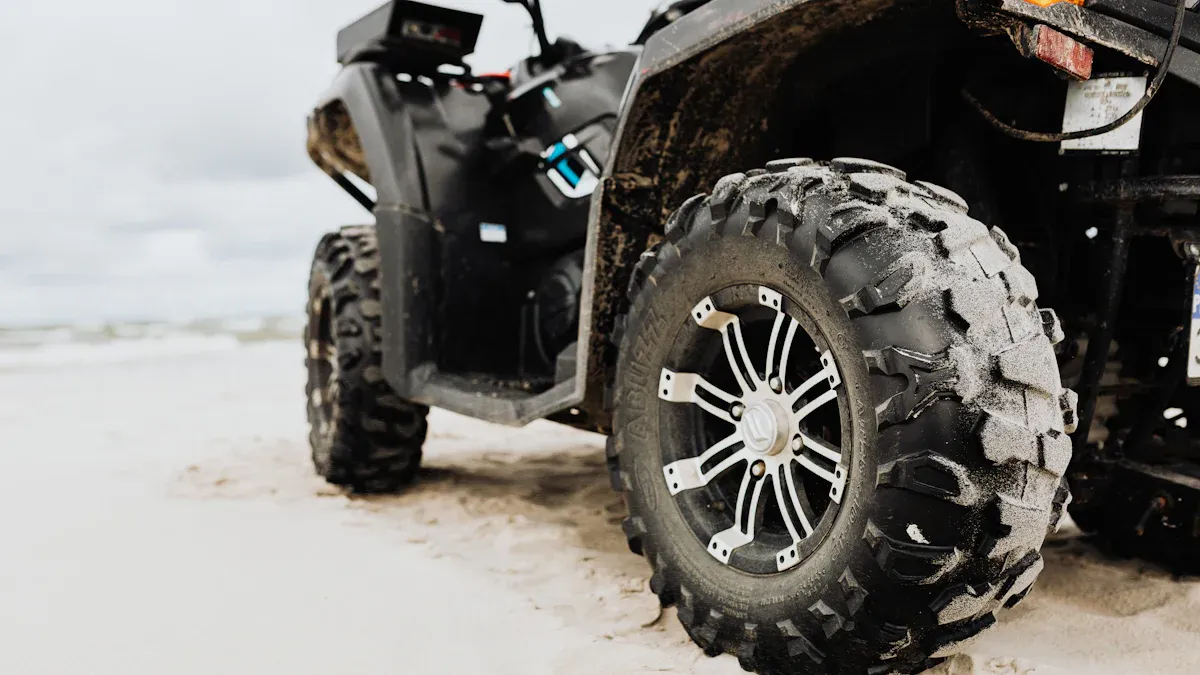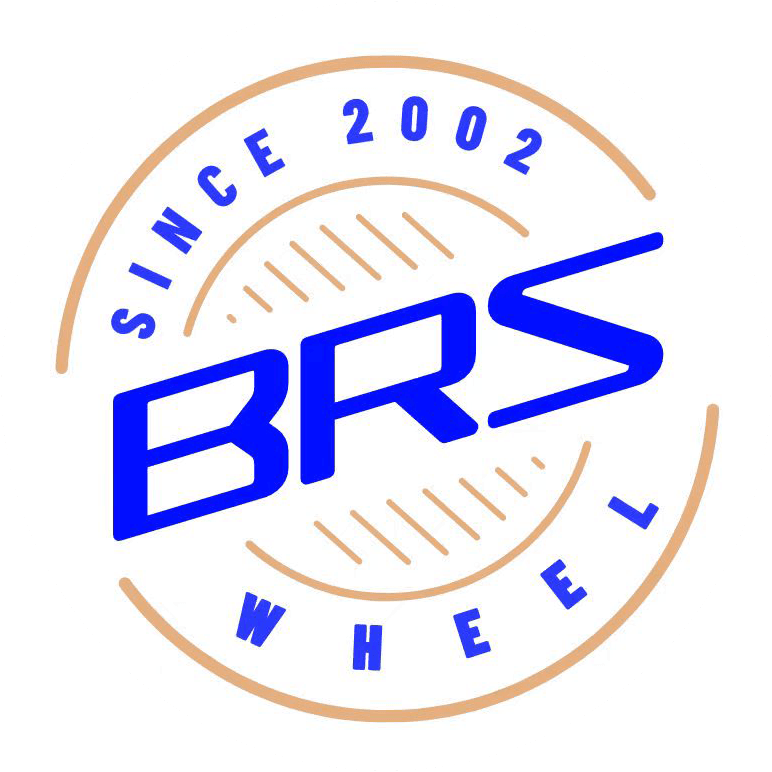
Die Wahl der richtigen Felgen kann die Leistung und das Aussehen Ihres Fahrzeugs verändern. A 16×8 Felge bietet ein einzigartiges Gleichgewicht zwischen Stil und Funktionalität, was sie zu einer beliebten Wahl unter Autoliebhabern macht. Diese Felgen bieten eine bessere Unterstützung für breitere Reifen, was das Handling und die Stabilität verbessert. Viele Fahrer kombinieren zum Beispiel 16×8-Felgen mit Reifen wie 265/75 R16, um eine optimale Leistung ohne Reibungsprobleme zu erzielen. Ob Sie nun aus ästhetischen Gründen oder wegen der Leistung aufrüsten, diese Felgen erfüllen verschiedene Bedürfnisse. Allerdings sollten Sie richtiger Abstand und der Einbau ist entscheidend, um Probleme mit dem Spiel zu vermeiden.
Wichtigste Erkenntnisse
- 16×8-Felgen verbessern die Ästhetik Ihres Fahrzeugs und verleihen ihm einen kühnen und aggressiven Look, der auf der Straße auffällt.
- Diese Felgen verbessern das Fahrverhalten und die Stabilität, indem sie einen besseren Reifenkontakt mit der Straße ermöglichen und so für ein ruhigeres und kontrollierteres Fahrgefühl sorgen.
Die Vielseitigkeit der 16×8-Felgen Das bedeutet, dass sie eine breite Palette von Reifengrößen aufnehmen können, wodurch sie für verschiedene Fahrstile und Gelände geeignet sind. - Achten Sie auf mögliche Probleme bei der Montage; der richtige Abstand ist entscheidend, um ein Reiben an der Aufhängung oder Karosserie Ihres Fahrzeugs zu vermeiden.
- Der Wechsel zu 16×8-Felgen kann sich aufgrund des erhöhten Rollwiderstands der größeren und schwereren Reifen auf den Kraftstoffverbrauch auswirken.
Betrachten Sie die Gesamtkosten im Zusammenhang mit der Aufrüstung auf 16×8-Felgen, einschließlich des Preises der kompatiblen Reifen und möglicher Änderungen, die für die Montage erforderlich sind. - Regelmäßige Wartungsarbeiten, wie z. B. das Drehen der Reifen und die Überprüfung des Reifendrucks, sind wichtig, um die Lebensdauer Ihrer Felgen und Reifen zu verlängern.
Vorteile von 16×8-Felgen
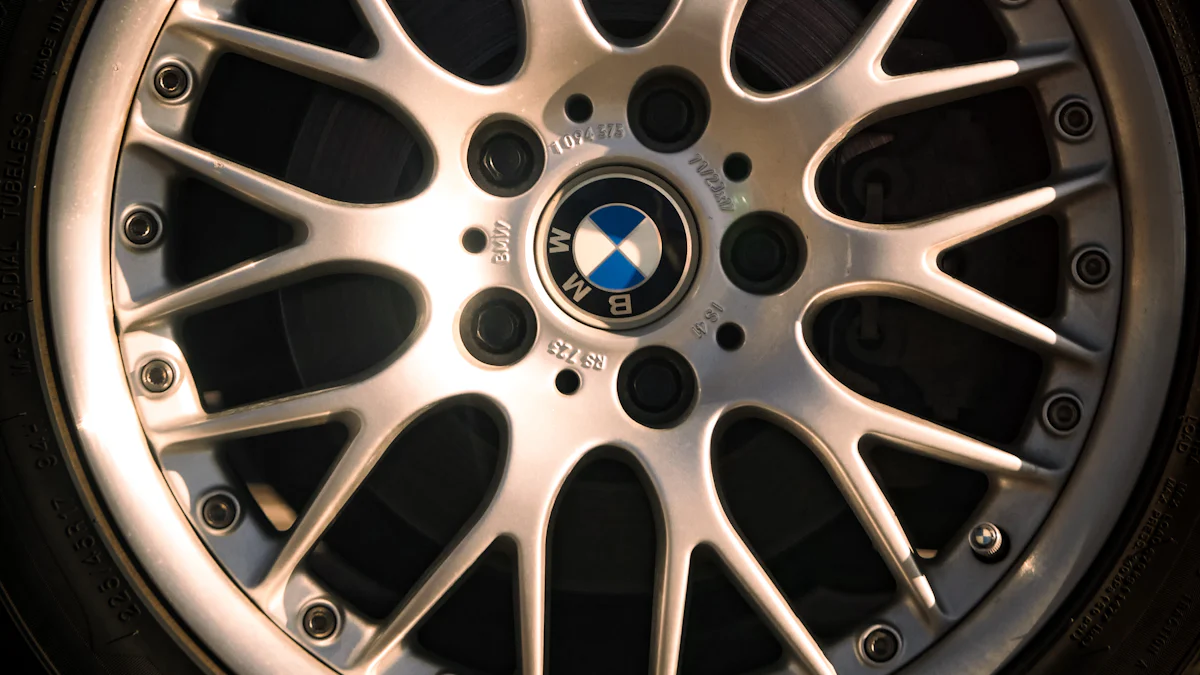
Verbesserte Ästhetik
Eine 16×8-Felge kann das Aussehen Ihres Fahrzeugs erheblich verbessern. Ihr breiteres Profil verleiht Ihrem Auto eine kühne und aggressive Haltung, die auf der Straße hervorsticht. Egal, ob Sie eine Limousine, einen SUV oder einen Geländewagen fahren, diese Felgen verleihen Ihrem Fahrzeug einen Hauch von Raffinesse und Sportlichkeit. Viele Autoliebhaber entscheiden sich für 16×8-Felgen, weil sie sich gut mit größeren Reifen kombinieren lassen und so ein ausgewogenes und auffälliges Aussehen erzeugen. Kombiniert man sie beispielsweise mit Reifen der Größe 265/75 R16, ergibt sich eine nahtlose Mischung aus Stil und Funktionalität. Wenn Sie die Optik Ihres Fahrzeugs aufwerten wollen, sind diese Felgen eine fantastische Wahl.
Verbesserte Handhabung und Stabilität
Wenn es um Leistung geht, bieten 16×8-Felgen spürbare Verbesserungen bei Handling und Stabilität. Das breitere Design ermöglicht einen besseren Reifenkontakt mit der Straße, was die Bodenhaftung bei Kurvenfahrten und Bremsvorgängen verbessert. Das macht Ihr Fahrerlebnis ruhiger und kontrollierter, besonders unter schwierigen Bedingungen. Diese Felgen sind zum Beispiel ideal für Reifen größer als 245/75 R16und sorgen für optimale Leistung, ohne die Sicherheit zu beeinträchtigen. Egal, ob Sie durch scharfe Kurven fahren oder auf der Autobahn unterwegs sind, die zusätzliche Stabilität der 16×8-Felgen stärkt Ihr Selbstvertrauen am Steuer.
Breitere Reifenoptionen
Einer der größten Vorteile von 16×8-Felgen ist ihre Kompatibilität mit einer breiten Palette von Reifengrößen. Sie können sie problemlos mit Reifen kombinieren, die für unterschiedliche Terrains und Fahrstile ausgelegt sind. Zum Beispiel passen sie perfekt zu 35-Zoll-Reifen für Offroad-Abenteuer oder 265/75 R16-Reifen für den täglichen Gebrauch. Diese Vielseitigkeit macht sie zu einer beliebten Wahl bei Fahrern, die Flexibilität bei der Reifenwahl wünschen. Darüber hinaus bietet die größere Felgenbreite Platz für größere Reifen, Verringerung des Risikos von Reibung oder Platzprobleme. Wenn Sie Anpassungsfähigkeit und Leistung schätzen, bieten 16×8-Felgen die perfekte Lösung.
Nachteile von 16×8-Felgen
Mögliche Probleme bei der Montage
Wenn Sie auf eine 16×8-Felge umrüsten, kann der Einbau zu einer Herausforderung werden. Das breitere Design ist nicht immer perfekt auf die Aufhängung oder Karosserie Ihres Fahrzeugs abgestimmt. Dies kann zu Reibungsproblemen führen, insbesondere in Verbindung mit größeren Reifen. Bei Fahrzeugen mit serienmäßiger Ausstattung können beispielsweise Modifikationen wie das Ausrollen des Kotflügels oder die Anpassung der Einpresstiefe erforderlich sein, um den richtigen Abstand zu gewährleisten. Außerdem spielt die Einpresstiefe der Felge eine entscheidende Rolle bei der Bestimmung der Kompatibilität. Eine geringere Einpresstiefe kann das Rad nach außen drücken, wodurch die Gefahr von Kollisionen mit den Kotflügeln oder Aufhängungskomponenten steigt. Bevor Sie umrüsten, sollten Sie sorgfältig nachmessen und einen Fachmann zu Rate ziehen, um diese potenziellen Probleme zu vermeiden.
Auswirkungen auf die Kraftstoffeffizienz
Der Wechsel zu einer 16×8-Felge kann sich auf die Kraftstoffeffizienz Ihres Fahrzeugs auswirken. Breitere Felgen bieten oft Platz für größere und schwerere Reifen, die den Rollwiderstand. Das bedeutet, dass Ihr Motor härter arbeiten muss, um die Geschwindigkeit zu halten, was zu einem höheren Kraftstoffverbrauch führt. Studien zufolge, größere Räder und Reifen kann das Fahrverhalten verbessern, kann aber zu einem härteren Fahrverhalten und einem geringeren Kraftstoffverbrauch führen. Wenn Sie häufig lange Strecken fahren oder Wert auf Kraftstoffeinsparungen legen, ist dieser Kompromiss eine Überlegung wert. Die Leistungsvorteile breiterer Felgen sind zwar unbestreitbar, aber sie gehen mit einer etwas geringeren Effizienz einher.
Kostenüberlegungen
Die Umrüstung auf 16×8-Felgen kann ein teures Unterfangen sein. Die anfänglichen Kosten für die Felgen selbst sind nur der Anfang. Möglicherweise müssen Sie auch in passende Reifen investieren, die aufgrund ihrer größeren Größe oft teurer sind. Darüber hinaus können Modifikationen wie die Anpassung der Einpresstiefe oder die Nachrüstung von Aufhängungskomponenten die Gesamtkosten in die Höhe treiben. Auch die Ersatzkosten für breitere Reifen sind in der Regel höher, so dass die langfristige Wartung kostspieliger ist. Wenn Sie über ein knappes Budget verfügen, müssen Sie diese Kosten gegen die Vorteile abwägen, um festzustellen, ob diese Aufrüstung in Ihre finanziellen Pläne passt.
Kompatibilität mit verschiedenen Fahrzeugen
Autos
Wenn Sie 16×8-Felgen für Ihr Auto in Erwägung ziehen, können sie ein fantastisches Upgrade sein. Diese Felgen verbessern oft sowohl das Aussehen als auch die Leistung von Limousinen und Kleinwagen. Das breitere Profil ermöglicht einen besseren Reifenkontakt mit der Straße und verbessert die Haftung und das Fahrverhalten. Viele Autofahrer kombinieren beispielsweise 16×8-Felgen mit Reifen der Größe 245/75 R16 oder 265/70 R16, um eine ausgewogene Optik und optimale Leistung zu erzielen. Sie müssen jedoch auf die richtige Spurweite achten, um Probleme mit der Bodenfreiheit zu vermeiden. Eine Spurweite von etwa 4,5 Zoll ist bei vielen Autos üblich, damit die Reifen innerhalb der Kotflügel bleiben und nicht scheuern. Wenn Sie sich nicht sicher sind, ob die Reifen passen, können Sie sich von einem Fachmann beraten lassen oder die technischen Daten Ihres Fahrzeugs zu Rate ziehen, um sich mögliche Kopfschmerzen zu ersparen.
SUVs und Lastwagen
Für SUVs und Lkw sind 16×8-Felgen eine beliebte Wahl, da sie größere Reifen aufnehmen können. Diese Felgen bieten die Stärke und Breite, die für Off-Road-Abenteuer oder schwere Einsätze erforderlich sind. Viele Lkw-Besitzer montieren Reifen wie 315/75 R16 auf 16×8-Felgen, um unwegsames Gelände zu bewältigen und gleichzeitig die Stabilität zu erhalten. Auch hier ist die richtige Spurweite entscheidend. Eine Spurweite von 4,26 ZollDiese Felgen eignen sich beispielsweise gut für viele SUVs und Lkw, da sie dafür sorgen, dass die Reifen nicht zu weit abstehen oder an der Aufhängung reiben. Darüber hinaus verleihen diese Felgen Ihrem Fahrzeug eine kühne und aggressive Haltung, was sie zu einem Favoriten unter Offroad-Enthusiasten und denjenigen macht, die eine souveräne Straßenpräsenz wünschen.
Off-Road-Fahrzeuge
Geländewagen profitieren erheblich von 16×8-Felgen. Diese Felgen wurden entwickelt, um die Herausforderungen von unebenem Gelände und extremen Bedingungen zu meistern. Die Kombination mit Reifen wie 35-Zoll-Geländereifen gewährleistet maximale Traktion und Haltbarkeit. Einige Off-Road-Fahrer verwenden beispielsweise 16×8-Felgen mit General Grabber AT/2-Reifen in der Größe 265/70 R16 für eine zuverlässige und robuste Ausrüstung. Die richtige Spurweite ist entscheidend für Halten Sie die Reifen innerhalb der Kotflügel und vermeiden Interferenzen mit Aufhängungskomponenten. Ein Abstand von etwa 4,5 Zoll ist oft ideal für Geländewagen und bietet den nötigen Freiraum für größere Reifen. Mit dem richtigen Setup können 16×8-Felgen Ihr Offroad-Erlebnis verändern und sowohl Leistung als auch Stil bieten.
Auswirkungen auf Leistung und Sicherheit
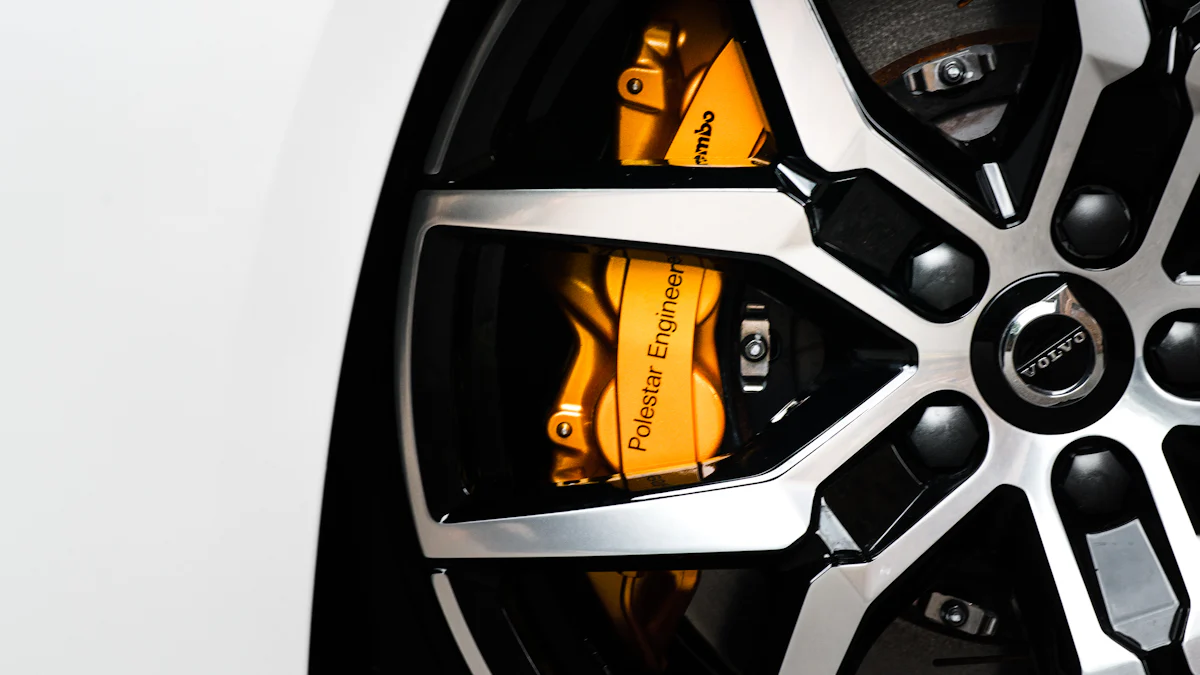
Fahrdynamik
Die Aufrüstung auf eine 16×8-Felge kann das Fahrverhalten Ihres Fahrzeugs auf der Straße erheblich verändern. Die breitere Felge ermöglicht einen besseren Reifenkontakt mit der Oberfläche, was die Traktion beim Beschleunigen, Kurvenfahren und Bremsen verbessert. Bei scharfen Kurven oder unebenen Straßen werden Sie mehr Stabilität feststellen. Dieser verbesserte Grip ermöglicht Ihnen eine bessere Kontrolle, insbesondere bei nassen oder rutschigen Bedingungen.
Durch den breiteren Felgenstand wird das Gewicht gleichmäßiger auf die Reifen verteilt, was die Rollneigung der Karosserie bei Hochgeschwindigkeitsmanövern verringert. Wenn Sie gerne temperamentvoll fahren oder Offroad-Abenteuer erleben, kann diese Verbesserung der Fahrdynamik Ihr Erlebnis steigern. Es ist jedoch wichtig, die richtige Ausrichtung und Fahrwerksabstimmung sicherzustellen, um diese Vorteile zu maximieren. Leistung und Sicherheit Vorteile.
Reifenverschleiß und Wartung
Der Wechsel zu einer 16×8-Felge kann auch Einfluss auf den Verschleiß Ihrer Reifen mit der Zeit. Die breitere Felge trägt größere Reifen, die den Druck oft gleichmäßiger auf die Lauffläche verteilen.
Die Wartung ist bei diesem Aufbau noch wichtiger. Breitere Reifen neigen dazu, mehr Schmutz aufzunehmen, was zu Reifenpannen oder Schäden führen kann. Die Reinigung der Felgen und die Überprüfung auf Risse oder Verformungen sollten Teil Ihrer Routine sein. Darüber hinaus sind Auswucht- und Ausrichtungskontrollen von entscheidender Bedeutung, um eine reibungslose Leistung und Sicherheit zu gewährleisten. Durch proaktive Wartung können Sie die Lebensdauer Ihrer Felgen und Reifen verlängern.
FAQs
1. Passen 16×8-Felgen ohne Änderungen auf mein Fahrzeug?
Das hängt von den Spezifikationen Ihres Fahrzeugs ab. Viele Fahrzeuge können 16×8-Felgen aufnehmen, aber der richtige Abstand ist entscheidend, um eine gute Passform zu gewährleisten. Zum Beispiel kann eine Versatz von 4,5 Zoll funktioniert bei den meisten Autos und Geländewagen gut, da die Reifen in den Kotflügeln bleiben und nicht scheuern. Wenn Sie sich nicht sicher sind, konsultieren Sie das Handbuch Ihres Fahrzeugs oder einen Fachmann, um die Kompatibilität zu überprüfen.
2. Welche Reifengrößen passen am besten zu 16×8-Felgen?
16×8-Felgen sind vielseitig und eignen sich für eine breite Palette von Reifengrößen. Beliebte Optionen sind 265/75 R16 für den täglichen Gebrauch oder 35-Zoll-Reifen für Offroad-Abenteuer. Einige Fahrer kombinieren beispielsweise 16×8-Felgen mit General Grabber AT/2-Reifen in der Größe 265/70 R16, um ein ausgewogenes Setup zu erhalten. Überprüfen Sie immer den Freiraum und die Aufhängung Ihres Fahrzeugs, um Probleme zu vermeiden.
3. Kann ich Serienreifen auf 16×8-Felgen verwenden?
In einigen Fällen ja, aber das hängt von der Breite des Reifens und der Ausstattung Ihres Fahrzeugs ab. Die serienmäßigen Reifen sind nicht immer optimal für breitere Felgen wie 16×8 geeignet. Reifen, die schmaler als 245/75 R16 sind, könnten beispielsweise nicht richtig auf der Felge sitzen und die Leistung und Sicherheit beeinträchtigen. Wenn Sie dies in Betracht ziehen, sollten Sie einen Reifenexperten konsultieren, um die Kompatibilität sicherzustellen.
4. Wirken sich 16×8-Felgen auf die Kraftstoffeffizienz aus?
Ja, das können sie. Breitere Felgen erfordern oft größere und schwerere Reifen, die den Rollwiderstand erhöhen. Das bedeutet, dass Ihr Motor härter arbeiten muss, was zu einer etwas geringeren Kraftstoffeffizienz führt. Während die Vorteile in Bezug auf Leistung und Fahrverhalten beträchtlich sind, könnten Sie einen kleinen Rückgang der Kilometerleistung feststellen. Wenn der Kraftstoffverbrauch eine Priorität ist, sollten Sie diesen Kompromiss sorgfältig abwägen.
5. Sind 16×8-Felgen für Geländewagen geeignet?
Unbedingt! 16×8-Felgen sind eine beliebte Wahl für Off-Road-Enthusiasten. Sie bieten die nötige Breite, um größere, haltbarere Reifen wie 35-Zoll-Geländereifen zu tragen. Einige Geländewagenfahrer verwenden beispielsweise 16×8-Felgen mit einem Abstand von 4,0 und Reifen der Größe 265/75 R16 für raues Terrain. Dieses Setup gewährleistet Stabilität und Traktion bei der Navigation unter schwierigen Bedingungen.
6. Was ist ein Versatz und warum ist er wichtig?
Die Spurweite misst den Abstand von der Montagefläche des Rades zu seiner Innenkante. Er bestimmt, wie weit das Rad innerhalb oder außerhalb des Kotflügels sitzt. Die richtige Spurweite stellt sicher, dass der Reifen nicht an Aufhängungselementen reibt oder zu weit herausragt. Bei 16×8-Felgen ist ein Abstand von etwa 4,5 Zoll für die meisten Fahrzeuge üblich und sorgt für eine ausgewogene Passform.
7. Kann ich 16×8-Felgen auf ein angehobenes Fahrzeug montieren?
Ja, angehobene Fahrzeuge lassen sich oft gut mit 16×8-Felgen kombinieren. Der zusätzliche Freiraum durch die Anhebung ermöglicht größere Reifen, die sowohl die Leistung als auch die Ästhetik verbessern. Zum Beispiel, ein 2,5-Zoll Rough Country Lift kombiniert mit 16×8-Felgen und 265/75 R16-Reifen schafft einen robusten Aufbau für den Einsatz im Gelände oder unter schweren Bedingungen. Achten Sie stets auf die richtige Ausrichtung, um Sicherheit und Leistung zu gewährleisten.
8. Muss ich mein Fahrzeug für die Verwendung von 16×8-Felgen umbauen?
Nicht immer, aber bei einigen Fahrzeugkonfigurationen kann eine Anpassung erforderlich sein. Bei Fahrzeugen mit serienmäßiger Aufhängung kann es beispielsweise erforderlich sein, die Kotflügel zu rollen oder den Versatz anzupassen, um Reibung zu vermeiden. Wenn Sie breitere Reifen fahren, könnten Modifikationen wie eine Höherlegung der Karosserie oder ein Upgrade der Aufhängung erforderlich sein. Wenn Sie die technischen Daten Ihres Fahrzeugs prüfen und einen Fachmann zu Rate ziehen, können Sie unerwartete Probleme vermeiden.
9. Sind 16×8-Felgen teuer in der Wartung?
Die Wartungskosten hängen von den Reifen ab, die Sie mit den Felgen kombinieren. Breitere Reifen sind in der Regel teurer und verschleißen schneller, wenn sie nicht richtig gewartet werden. Regelmäßiges Drehen der Reifen, Prüfen des Reifendrucks und Ausrichten sind wichtig, um die Lebensdauer der Reifen zu verlängern. Auch die Reinigung der Felgen und die Überprüfung auf Schäden tragen dazu bei, die Wartungskosten überschaubar zu halten.
10. Was sind die Vorteile einer Umrüstung auf 16×8-Felgen?
Die Aufrüstung auf 16×8-Felgen verbessert die Ästhetik, das Handling und die Vielseitigkeit Ihres Fahrzeugs. Sie unterstützen breitere Reifen und verbessern die Haftung und Stabilität bei Kurvenfahrten und Bremsvorgängen. Ob Sie auf der Autobahn oder im Gelände unterwegs sind, diese Felgen bieten einen spürbaren Leistungszuwachs. Außerdem verleiht ihr kühnes Design dem Erscheinungsbild Ihres Fahrzeugs eine stilvolle Note.
Eine 16×8-Felge bietet eine fantastische Mischung aus Stil, Leistung und Anpassungsfähigkeit. Ihr breiteres Design verbessert den Halt der Reifenverbessert die Bodenhaftung und sorgt für Stabilität unter verschiedenen Fahrbedingungen. Ob Sie nun aus ästhetischen oder funktionalen Gründen aufrüsten, diese Felgen können die Dynamik Ihres Fahrzeugs verändern. Allerdings passt nicht jedes Fahrzeug perfekt dazu. Prüfen Sie stets die Kompatibilität Ihres Fahrzeugs und lassen Sie sich von einem Fachmann beraten, um die richtige Passform zu gewährleisten. Wenn Sie die Vor- und Nachteile sorgfältig abwägen, können Sie eine fundierte Entscheidung treffen, die Ihren Fahrbedürfnissen und Vorlieben gerecht wird.
FAQ
Passen 225/45/16-Reifen auf 16×8-Felgen mit einer Einpresstiefe von +38?
Ja, 225/45/16-Reifen können auf 16×8-Felgen mit einer Einpresstiefe von +38 passen. Diese Einstellung eignet sich für viele Fahrzeuge und bietet eine ausgewogene Kombination aus Breite und Höhe. Die Einpresstiefe von +38 sorgt dafür, dass der Reifen innerhalb des Kotflügels bleibt, wodurch die Gefahr des Scheuerns verringert wird. Prüfen Sie jedoch immer die Spezifikationen Ihres Fahrzeugs, um die Kompatibilität zu bestätigen.
Welche Reifengröße sollte ich für 16×8-Felgen wählen, wenn ich mehr Wert auf das Verhältnis und die Höhe lege?
Wenn Ihnen das Reifenverhältnis und die Höhe wichtiger sind als die Breite, sollten Sie Optionen wie 245/75 R16 oder 265/70 R16 in Betracht ziehen. Diese Größen bieten ein gutes Gleichgewicht zwischen Höhe und Leistung. General Grabber AT/2-Reifen in 265/70 R16 sind zum Beispiel eine beliebte Wahl für 16×8-Felgen. Sie finden diese Reifen bei den meisten Reifenhändlern oder in Online-Shops, die sich auf individuelle Zusammenstellungen spezialisiert haben.
Welches ist der breiteste Reifen, den ich auf 16×8-Felgen montieren kann?
Der breiteste Reifen, den Sie sicher auf 16×8-Felgen montieren können, hängt von der richtigen Spurweite ab. Reifen wie 265/75 R16 oder sogar 35-Zoll-Optionen funktionieren gut mit diesen Felgen, wenn der Abstand den Reifen innerhalb des Kotflügels hält. Ein Abstand von 4,0 Zoll beispielsweise sorgt für eine gute Passform ohne Reibung. Lassen Sie sich immer von einem Fachmann beraten, um die beste Größe für Ihr Fahrzeug zu ermitteln.
"Ich persönlich habe meine General Grabber AT/2 in der Größe 265/70 R16 auf 16×8 Rover Originalfelgen montiert, und sie passen perfekt und ohne Probleme." - Ein zufriedener Fahrer.
Kann ich ohne Probleme 16×8-Felgen mit 35-Zoll-Reifen fahren?
Ja, Sie können 16×8-Felgen mit 35-Zoll-Reifen fahren, vorausgesetzt, Ihr Fahrzeug hat genügend Freiraum. Viele Fahrer berichten, dass sie mit dieser Konfiguration keine Probleme haben, vor allem, wenn sie mit einem Höherlegungssatz kombiniert werden. Eine 2,5-Zoll-Höherlegung von Rough Country in Kombination mit 16×8-Felgen und 265/75 R16-Reifen ist beispielsweise eine robuste und funktionale Lösung. Eine korrekte Ausrichtung und ein entsprechender Abstand sind der Schlüssel zur Vermeidung von Reibung oder Interferenzen mit dem Rahmen.
Sind 16×8-Felgen für ältere Fahrzeuge wie einen Scout II von 1979 geeignet?
Auf jeden Fall! 16×8-Felgen können ein großartiges Upgrade für ältere Fahrzeuge wie den 1979er Scout II sein. Sie verbessern sowohl das Aussehen als auch die Leistung der klassischen Modelle. Stellen Sie sicher, dass Sie den richtigen Abstand wählen, z. B. 4,0 Zoll, damit die Reifen innerhalb der Kotflügel bleiben. Wenn Sie diese Felgen mit Reifen wie 265/75 R16 kombinieren, kann Ihr Scout II einen kühnen und funktionalen Look erhalten.
Welche Spurweite eignet sich am besten für 16×8-Felgen?
Ein Abstand von etwa 4,0 bis 4,5 Zoll ist ideal für 16×8-Felgen. In diesem Bereich bleiben die Reifen richtig in den Kotflügeln ausgerichtet und reiben nicht an den Aufhängungselementen. Viele Geländewagen und Lastwagen verwenden beispielsweise eine Spurweite von 4,26 Zoll mit 16×8-Felgen, um eine ausgewogene Passform zu erreichen. Messen Sie immer den Aufbau Ihres Fahrzeugs, um die besten Ergebnisse zu erzielen.
Kann ich 16×8-Felgen für ein angehobenes Fahrzeug verwenden?
Ja, angehobene Fahrzeuge passen hervorragend zu 16×8-Felgen. Der zusätzliche Freiraum durch die Anhebung ermöglicht größere Reifen, die sowohl die Leistung als auch die Ästhetik verbessern. Eine 2,5-Zoll-Höherlegung von Rough Country in Kombination mit 16×8-Felgen und 265/75 R16-Reifen ist beispielsweise eine zuverlässige Kombination für Offroad-Abenteuer. Achten Sie auf die richtige Ausrichtung, um Sicherheit und Leistung zu erhalten.
Benötige ich Änderungen, um 16×8-Felgen an meinem Fahrzeug anzubringen?
Nicht immer, aber bei einigen Konfigurationen können Anpassungen erforderlich sein. Bei serienmäßigen Fahrzeugen müssen Sie möglicherweise Modifikationen vornehmen, wie z. B. das Abrollen der Kotflügel oder die Anpassung des Versatzes, um ein Scheuern zu verhindern. Wenn Sie breitere Reifen verwenden, könnte eine Höherlegung der Karosserie oder ein Upgrade der Aufhängung erforderlich sein. Wenn Sie die technischen Daten Ihres Fahrzeugs prüfen und einen Fachmann zu Rate ziehen, können Sie unerwartete Probleme vermeiden.
Sind 16×8-Felgen teuer in der Wartung?
Die Wartungskosten hängen von den Reifen ab, die Sie mit den Felgen kombinieren. Breitere Reifen sind in der Regel teurer und verschleißen schneller, wenn sie nicht richtig gewartet werden. Regelmäßiges Drehen der Reifen, Prüfen des Reifendrucks und Ausrichten sind wichtig, um die Lebensdauer der Reifen zu verlängern. Auch die Reinigung der Felgen und die Überprüfung auf Schäden tragen dazu bei, die Wartungskosten überschaubar zu halten.
Was sind die Vorteile einer Umrüstung auf 16×8-Felgen?
Die Aufrüstung auf 16×8-Felgen verbessert die Ästhetik, das Handling und die Vielseitigkeit Ihres Fahrzeugs. Sie unterstützen breitere Reifen und verbessern die Haftung und Stabilität bei Kurvenfahrten und Bremsvorgängen. Ob Sie auf der Autobahn oder im Gelände unterwegs sind, diese Felgen bieten einen spürbaren Leistungszuwachs. Außerdem verleiht ihr kühnes Design dem Erscheinungsbild Ihres Fahrzeugs eine stilvolle Note.
Verwandte Nachrichten
- Posted in:Allgemein
